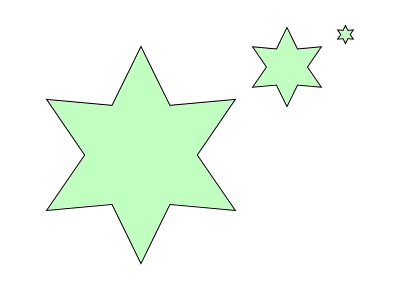Teaching:TUW - UE InfoVis WS 2005/06 - Gruppe G7 - Aufgabe 1 - Relative Size: Difference between revisions
(References reformated) |
m (Copied links from discussion page) |
||
| Line 62: | Line 62: | ||
*[Boeree, 2002] George Boeree, [http://www.ship.edu/~cgboeree/genpsyperception.html Perception and interaction], ''Shippensburg University'', 2002, Retrieved at: October 25, 2005. http://www.ship.edu/~cgboeree/genpsyperception.html | *[Boeree, 2002] George Boeree, [http://www.ship.edu/~cgboeree/genpsyperception.html Perception and interaction], ''Shippensburg University'', 2002, Retrieved at: October 25, 2005. http://www.ship.edu/~cgboeree/genpsyperception.html | ||
*[Allen, 2005] Chuck Allen, [http://www.csusm.edu/iits/trc/training/lessons/graphicDesign/d2Perception/2_design_perception.htm Visual Perception - Graphic Design Concepts], ''Technology Resource Center'', Cal State San Marcos, Last revised at: March 1, 2005, Retrieved at: November 3, 2005. http://www.csusm.edu/iits/trc/training/lessons/graphicDesign/d2Perception/2_design_perception.htm | |||
*[Winkler, 2005] Compiled by Ramona Winkler, edited by Gerd Waloszek, [http://www.sapdesignguild.org/resources/optical_illusions/optical_illusions.pdf Optical Illusions], ''SAP Design Guild''. Retrieved at: November 3, 2005. http://www.sapdesignguild.org/resources/optical_illusions/optical_illusions.pdf | |||
*[Headscape, 2005] Headcape Ltd, [http://www.headscape.co.uk/view_article.asp?PageId=5&ArticleId=54 Usability vs Graphic Design ], ''Headscape Ltd.'', Salisbury. Retrieved at: November 3, 2005. http://www.headscape.co.uk/view_article.asp?PageId=5&ArticleId=54 | |||
*[Starphoto, 2005] Ron Johnson (Curator), [http://www.startphoto.com/learn/art/principles_of_design.htm Principles of design ], ''Starphoto - online photographic art community''. Retrieved at: November 3, 2005. http://www.startphoto.com/learn/art/principles_of_design.htm | |||
*[Unknown] Unknown Author [http://www.uark.edu/misc/lampinen/PSYC2003_PERCEPTION.html Perception], ''University of Arkansas'' Retrieved at: November 3, 2005. http://www.uark.edu/misc/lampinen/PSYC2003_PERCEPTION.html | |||
Latest revision as of 15:35, 3 November 2005
Relative Size (Smaller components tend to be perceived as objects.)[edit]
the term "relative size" is used in the context of the Gestalt Laws of grouping, and describes how we perceive figures of different sizes.
Examples[edit]
 The star on the left looks like it was placed on a circular background.
The star on the left looks like it was placed on a circular background.
In some publications the same effect is called "smallness" [Chandler, 1997], because the visual focus lies on the smaller object.
"relative size" in other contexts[edit]
In visual design, the term "relative size" is also used in the following contexts:
next to
If two objects placed next to each other do not share the same size, the bigger object is perceived as being the one more important.
When these objects change size relative to each other, this gives the impression of changed importance.
Other trivial examples for static relative sizes are of course the headlines and titles in contrast to normal text on this page.
perspective
A smaller object with the same outline is seen as being farther away than the first one.
Resources[edit]
[Dürsteler, 2000] Juan C. Dürsteler, Gestalt and Visual Momentum. Created at 2000-11-27, Retrieved at Oct 25, 2005. http://www.infovis.net/printMag.php?num=19&lang=2
this article is based on
[Ware, 1999] Colin Ware. Information Visualization: Perception for Design. Morgan Kaufmann series in interactive technologies, 1999
[Chandler, 1997] Daniel Chandler, Visual Perception 6, University of Texas at Austin, Retrieved at Oct 25, 2005. http://www.aber.ac.uk/media/Modules/MC10220/visper06.html
Further readings
- [Chandler, 1997] Daniel Chandler, Visual Perception 2, University of Texas at Austin, Retrieved at October 25, 2005 http://www.aber.ac.uk/media/Modules/MC10220/visper02.html
- [Chi, 2000] Ed H. Chi, Representing Data using Static and moving patterns, Xerox Parc, 2000, Retrieved at October 25, 2005. http://www-users.cs.umn.edu/~echi/tutorial/perception2000/2000-05-EdChi-VisualPatterns-CHI2000-notes.pdf
- [Boeree, 2002] George Boeree, Perception and interaction, Shippensburg University, 2002, Retrieved at: October 25, 2005. http://www.ship.edu/~cgboeree/genpsyperception.html
- [Allen, 2005] Chuck Allen, Visual Perception - Graphic Design Concepts, Technology Resource Center, Cal State San Marcos, Last revised at: March 1, 2005, Retrieved at: November 3, 2005. http://www.csusm.edu/iits/trc/training/lessons/graphicDesign/d2Perception/2_design_perception.htm
- [Winkler, 2005] Compiled by Ramona Winkler, edited by Gerd Waloszek, Optical Illusions, SAP Design Guild. Retrieved at: November 3, 2005. http://www.sapdesignguild.org/resources/optical_illusions/optical_illusions.pdf
- [Headscape, 2005] Headcape Ltd, Usability vs Graphic Design , Headscape Ltd., Salisbury. Retrieved at: November 3, 2005. http://www.headscape.co.uk/view_article.asp?PageId=5&ArticleId=54
- [Starphoto, 2005] Ron Johnson (Curator), Principles of design , Starphoto - online photographic art community. Retrieved at: November 3, 2005. http://www.startphoto.com/learn/art/principles_of_design.htm
- [Unknown] Unknown Author Perception, University of Arkansas Retrieved at: November 3, 2005. http://www.uark.edu/misc/lampinen/PSYC2003_PERCEPTION.html

